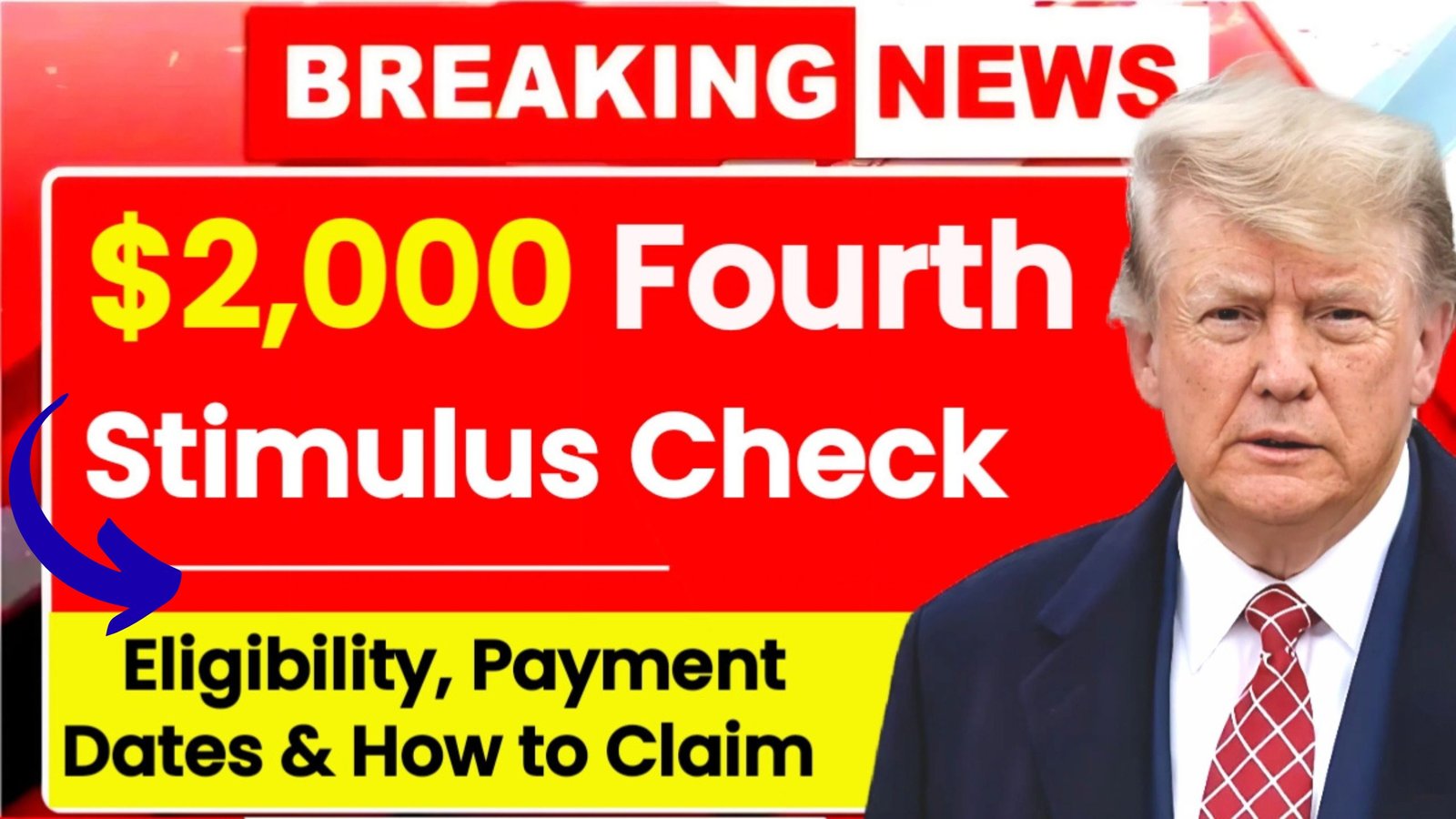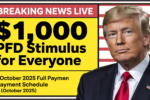$2,000 Fourth Stimulus Check 2025 : The topic of a potential fourth stimulus check has resurfaced as discussions around economic relief continue in 2025. While there is no official federal $2,000 stimulus check at this time, proposals like the American Worker Rebate Act have been circulating. This article provides a detailed breakdown of the latest information, eligibility considerations, potential payment timelines, and how individuals could claim such a check if enacted.
$4,983 Direct Deposit in October 2025 – Eligibility and Full Payment Schedule Explained
Background of the Proposed $2,000 Stimulus Check
The idea of a fourth stimulus check has emerged in response to ongoing economic challenges faced by Americans. Legislators such as Senator Josh Hawley have introduced bills like the American Worker Rebate Act of 2025, which proposes federal rebates of $600 per adult and child, totaling up to $2,400 for a family of four. While these proposals are still under consideration and have not been enacted, they highlight the continued interest in direct financial assistance to citizens.
Eligibility Criteria for the Proposed Stimulus Check
If a $2,000 fourth stimulus check were enacted, eligibility would likely depend on income thresholds and filing status. Generally, single filers earning up to $75,000 per year, married couples filing jointly with income up to $150,000, and heads of households with income up to $112,500 might qualify for the full payment. Those earning slightly above these limits could receive partial payments. Social Security recipients, veterans, and certain non-filers may also be considered for automatic or manual payments.
Payment Dates and Distribution Methods
Should the $2,000 stimulus check be approved, payments would likely be issued in phases. Direct deposits would be prioritized for individuals who have recently filed tax returns. Paper checks and Economic Impact Payment (EIP) debit cards would follow for those without direct deposit information. Although no official schedule has been announced, historical patterns suggest that payments could be delivered over several weeks after legislation is signed into law.
Federal $2,000 Direct Deposit Payments Coming in October 2025
How to Claim the Stimulus Check
Eligible individuals who have filed tax returns would typically receive the payment automatically. Non-filers would likely need to submit their information via the IRS Non-Filer Tool to ensure receipt. Additionally, recipients of Social Security, Supplemental Security Income (SSI), and Veterans Affairs (VA) benefits may receive automatic deposits without needing additional forms. Staying informed through IRS announcements will be crucial if the proposal becomes law.
Frequently Asked Questions ($2,000 Fourth Stimulus Check 2025 )
Is the $2,000 fourth stimulus check real?
Currently, no official $2,000 fourth stimulus check has been approved. Discussions and proposals exist, but Congress has not enacted any new federal payments.
Who would qualify for the proposed stimulus check?
Eligibility would likely be based on income and filing status. Full payments could go to single filers earning up to $75,000, married couples up to $150,000, and heads of households up to $112,500, with partial payments for slightly higher incomes.
When would the stimulus check be paid?
If passed, the IRS would distribute payments in phases, starting with direct deposits. Paper checks and EIP debit cards would follow, but no official schedule exists yet.
How can I claim the proposed check?
Most eligible filers would receive payments automatically. Non-filers would need to submit their information through the IRS Non-Filer Tool. Social Security, SSI, and VA beneficiaries may also receive payments automatically.
Final Thoughts
While a $2,000 fourth stimulus check remains a proposal and is not yet law, the ongoing conversation reflects continued interest in direct economic relief for Americans. Staying updated through official IRS channels and monitoring legislative developments will be key for anyone hoping to benefit from potential future payments. Meanwhile, exploring other federal, state, and local assistance programs can help bridge financial needs until any new stimulus measures are enacted.




